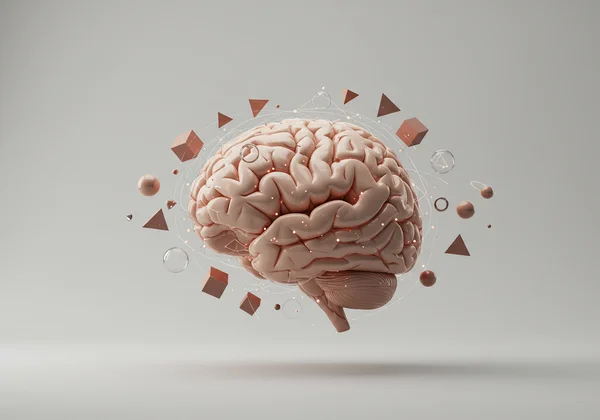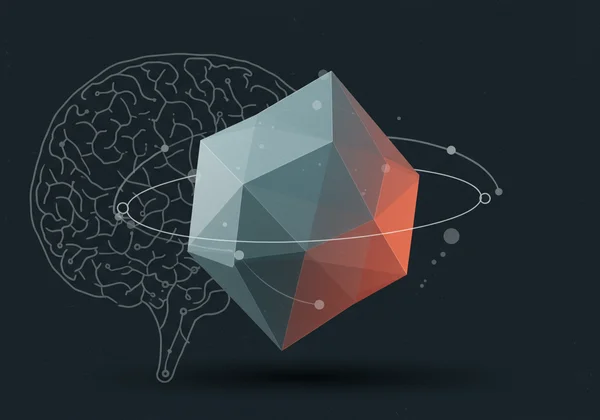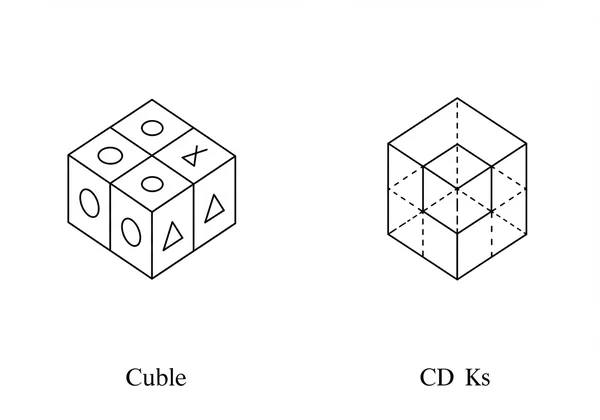Wonderlic Spatial Reasoning Test: Master Questions & Examples
Have you ever looked at a complex diagram, a folded piece of paper with punch holes, or a sequence of abstract shapes and felt completely stumped? You're not alone. The spatial reasoning section of the Wonderlic test is designed to be challenging, but it's a skill you can absolutely master. So, what is the Wonderlic test's spatial reasoning section truly measuring? It assesses your ability to visualize, manipulate, and understand shapes and objects in two and three dimensions—a critical skill in many professional fields.
This comprehensive guide will demystify the Wonderlic spatial reasoning test. We will break down the exact question types you'll face, provide clear examples, and share expert strategies to sharpen your visual logic. By the end, you'll have the confidence and tools to turn this challenging section into one of your strengths. Ready to start improving? You can apply these techniques immediately on a free Wonderlic practice test.

Understanding Wonderlic Spatial Reasoning
Before diving into specific questions, it’s crucial to understand the "why" behind this section. Employers use the Wonderlic to gauge cognitive abilities that predict job performance, and spatial reasoning is a powerful indicator of problem-solving and critical thinking skills. It moves beyond words and numbers to evaluate how you process visual information.
What is Spatial Reasoning and Why Is It on the Wonderlic Test?
Spatial reasoning is the capacity to think about objects in 3D and draw conclusions about them from limited information. Think of an architect visualizing a building from blueprints or a mechanic understanding how engine parts fit together. The Wonderlic includes these questions because this skill is vital for roles in engineering, design, technology, logistics, and even public safety, where quick, accurate visual-spatial judgments are essential. It measures your innate ability to see patterns and relationships in the physical world.
The Cognitive Skills Behind Visual Logic Challenges
At its core, the Wonderlic’s spatial section tests several distinct cognitive functions. These include mental rotation (the ability to turn objects in your mind), spatial visualization (imagining what an object would look like from a different angle or when unfolded), and pattern recognition (identifying a repeating rule in a visual sequence). Mastering these questions isn't about memorizing facts; it's about training your brain to execute these mental processes faster and more accurately. The good news is that these skills can be significantly improved with targeted practice on a realistic practice exam.

Common Wonderlic Spatial Reasoning Question Types & Examples
The Wonderlic test uses a few recurring formats to assess your spatial skills. Recognizing these patterns is the first step toward solving them efficiently. Let's break down the most common types with examples to show you exactly what to expect. This is where your Wonderlic test questions prep becomes a major advantage.
Pattern Recognition and Series Completion
These questions present a sequence of shapes or figures that change according to a specific rule. Your task is to identify this rule and select the next logical shape in the series.
- Example: Imagine a series of three squares. The first has a dot in the top-left corner. The second has the dot in the top-right corner. The third has the dot in the bottom-right corner. Where will the dot be in the fourth square?
- Logic: The dot is moving clockwise from one corner to the next. The correct answer would be a square with the dot in the bottom-left corner. These questions test your ability to spot logical progressions.
3D Shapes, Cube Unfolding, and Rotation Puzzles
This is often considered the most challenging category. You might be shown a flattened, unfolded pattern of a cube (a "net") and asked which of the assembled cubes could be made from it. Alternatively, you could see a 3D object and be asked what it looks like from a different angle.
-
Example: You see a flat pattern with six squares in a cross shape. One square is marked with a circle, and the one opposite is marked with a triangle. When folded into a cube, can the circle and triangle faces be next to each other?
-
Logic: No. On a standard cube net, faces opposite each other in the flat pattern will also be on opposite sides of the folded cube and can never be adjacent. Developing visualization techniques is key here.

Paper Folding and Punching Problems
In these questions, you are shown a sequence of images depicting a piece of paper being folded one or more times. The final image shows a hole being punched through the folded paper. Your task is to visualize what the paper will look like when completely unfolded.
- Example: A square piece of paper is folded in half from top to bottom. It's then folded in half again from left to right. A circular hole is punched in the top-right corner of the resulting smaller square. When unfolded, what will the pattern of holes look like?
- Logic: You must reverse the process. Unfolding it once (right to left) will create a mirror image of the hole, resulting in two holes on the top half. Unfolding it again (bottom to top) will mirror those two holes onto the bottom half, resulting in four holes—one in each corner of the original square.
Abstract Reasoning and Matrix Questions
Similar to series completion, matrix questions present a 3x3 grid of symbols or shapes with one missing. You must analyze the patterns moving across the rows and down the columns to determine the rule and identify the missing piece.
- Example: In a 3x3 grid, each row contains a square, a circle, and a triangle. The first row has them un-shaded, the second row has them half-shaded, and the third row has a full-shaded square and a full-shaded circle. What is the missing shape?
- Logic: The rule for each row is to contain one of each shape, and the rule for each column is to progress from un-shaded to half-shaded to full-shaded. The missing shape must be a fully-shaded triangle.
Strategies for Acing Wonderlic Spatial Reasoning
Understanding the question types is half the battle. The other half is execution, especially under the pressure of the 12-minute time limit. Effective cognitive ability test prep involves more than just knowledge; it requires strategy.
Develop Your Visualization Techniques
You don't need to be an artist to improve your visualization skills. Start by practicing with real-world objects. Take a small box, unfold it, and then reassemble it. Pay attention to how the sides relate to one another. For paper-folding questions, use a scrap piece of paper to physically replicate the steps. This hands-on practice builds a mental library of spatial relationships that you can access quickly during the test.
Effective Time Management for Spatial Sections
Spatial reasoning questions can be time-consuming. The key is to not get bogged down on a single difficult problem. If you can't see the answer within 15-20 seconds, make an educated guess and move on. It's better to answer more questions correctly than to spend a full minute on one puzzle. The goal is to maximize your total score, and pacing is critical. You can perfect this skill by taking a timed Wonderlic test.
Practice Makes Perfect: Utilizing Wonderlic Spatial Practice Tests
There is no substitute for practice. The more Wonderlic test examples you work through, the faster you'll become at recognizing patterns and applying the right mental shortcuts. A high-quality simulation will expose you to a wide variety of questions and help you build the mental stamina needed for the real exam. This is the single most effective way to improve your score. Are you ready to test your skills?

Your Path to Conquering Wonderlic Spatial Reasoning
Mastering the Wonderlic's spatial reasoning section is an achievable goal. By understanding the core cognitive skills being tested, recognizing the common question formats, and applying smart strategies, you can transform this area from a point of anxiety into a source of confidence. Remember the key takeaways: identify the pattern, visualize the manipulation, and manage your time effectively.
The final and most crucial step is to put your knowledge into action. Theory will only take you so far. The best way to solidify these strategies is to apply them in a realistic, timed environment. Take the next step in your preparation journey and ace your Wonderlic test.
Frequently Asked Questions About Wonderlic Spatial Reasoning
What is the primary skill tested by Wonderlic spatial reasoning questions?
The primary skill is your ability to mentally manipulate 2D and 3D objects. This includes mental rotation, visualization of how parts fit together, and recognizing patterns in visual sequences without relying on language or math.
How can I specifically improve my 3D visualization for the Wonderlic Test?
Start with physical objects. Practice unfolding and refolding small boxes. Use building blocks or even online 3D modeling tools to see how objects look from different perspectives. Consistent practice on a simulated practice test is the most direct way to improve this specific skill.
Are there any shortcuts or tricks for solving Wonderlic paper folding questions quickly?
Yes. The key is to work backward and focus on symmetry. Every fold creates a line of symmetry. When a hole is punched, it will be mirrored across the most recent fold line when unfolded. By mentally "unfolding" one step at a time, you can quickly deduce the final pattern.
Does practicing spatial reasoning improve overall cognitive ability?
Absolutely. Research suggests that training in spatial reasoning can enhance problem-solving skills, memory, and even mathematical abilities. It strengthens the neural pathways responsible for visual processing and logical deduction, providing benefits far beyond just this test.
How much time should I allocate for spatial reasoning questions on the Wonderlic Test?
The Wonderlic test gives you 12 minutes for 50 questions, averaging about 14 seconds per question. Spatial reasoning questions may take slightly longer than verbal or math questions. Aim to solve them in 20-25 seconds. If you can't, guess and move on immediately to avoid losing valuable time.
Disclaimer: This independent online preparation platform is not affiliated with, endorsed by, or in any way officially connected with Wonderlic, Inc. All trademarks are the property of their respective owners.